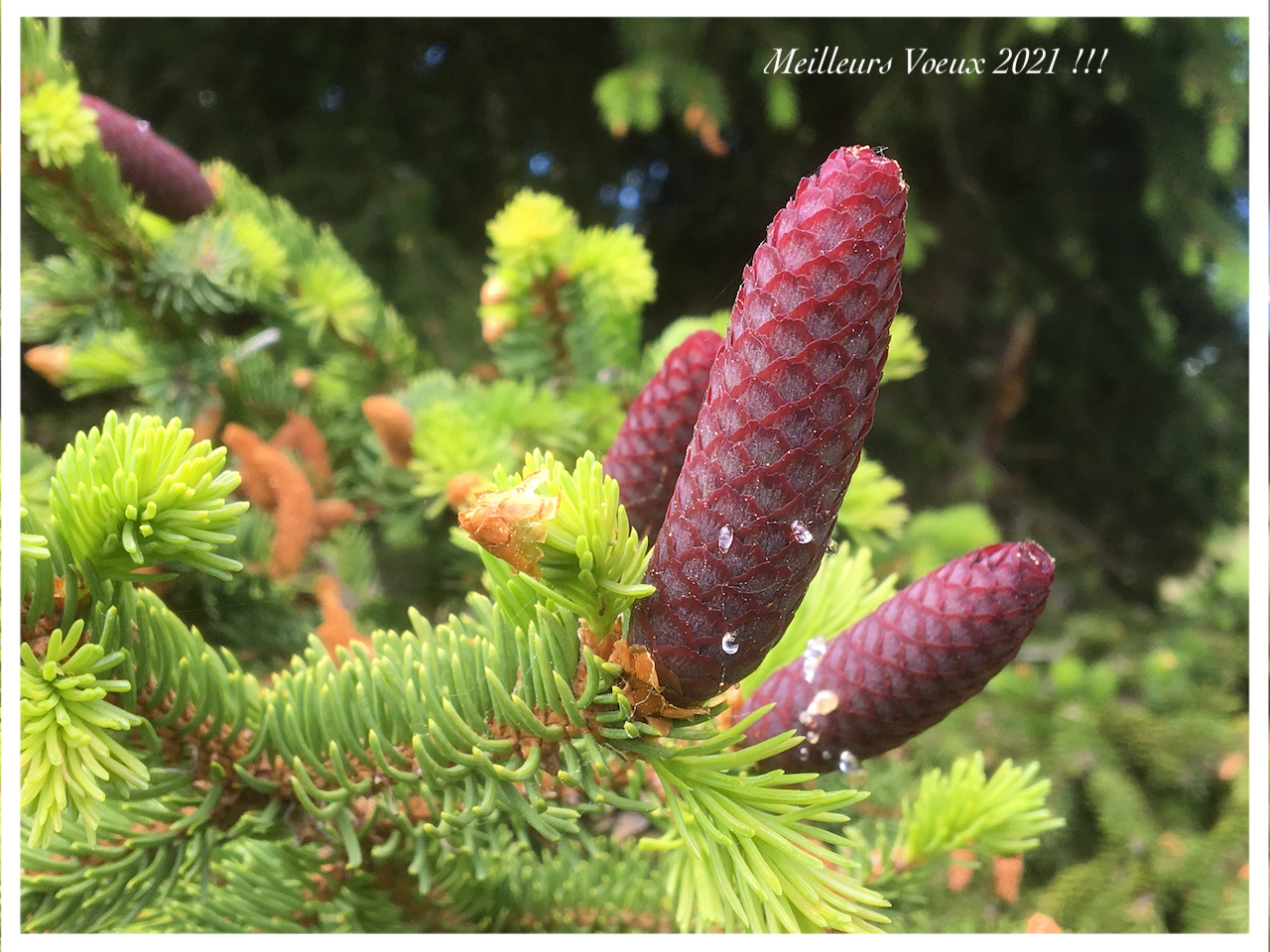
Mixing beech with fir or pubescent oak does not help mitigate drought exposure at the limit of its climatic range
In the context of climate change, it remains unclear whether mixed-species forests will help mitigate the impacts of future droughts and, if so, through which processes. As European beech (Fagus sylvatica L.) is one of the major European species, it is crucial to evaluate its response to drought when mixed with species with contrasted functional traits and in contrasted climatic conditions, particularly at the limit of its climatic range.
In a recent paper entitled “Mixing beech with fir or pubescent oak does not help mitigate drought exposure at the limit of its climatic range” published in Forest Ecology & Management, Soline Martin-Blangy and her collaborators (UMR Silva, UMR ISPA, UMR Biogeco, UMR CEFE) aimed to (i) characterize the effects of tree species interactions on the drought exposure of beech in south-eastern France, and (ii) determine whether belowground water uptake complementarity underlies these effects.
They focused on beech-silver fir (Abies alba Mill.) and beech-pubescent oak (Quercus pubescens Willd.) forests across six sites in the French pre-Alps, a region at the limit of the climatic range for beech. They used a triplet approach to compare the tree-ring carbon isotope composition (δ13C) of these species in pure and two-species mixed stands during a period of dry years, and used water hydrogen isotope composition (δ2H) in the xylem to identify water uptake sources. Overall, they found no clear mixture effect pattern on beech physiological functioning among sites and triplets. In beech-fir sites, mixing beech with fir had no effect on beech δ13C values during dry years. In beech-oak sites, mixture effects on beech were mostly neutral, although sometimes beech suffered from a stronger exposure to drought in mixed stands.
This study emphasizes the impact of the tree sampling design on the outcome of studies on forest biodiversity-ecosystem functioning relationships. Limiting tree sampling to dominant trees when analyzing stand-level relationships may bias these outcomes. The authors evidenced differences in water uptake sources between beech and fir, but not between beech and oak during a dry summer. However, these patterns did not help explain the lack of species mixture effects, or existence thereof, at the triplet scale. This study demonstrates that managing beech in mixed stands with silver fir or pubescent oak at the limit of beech climatic range does not buffer drought impacts on beech during dry years. In the long term, with more frequent extreme droughts, promoting beech-fir mixtures will not be detrimental to beech drought response, while beech may suffer in mixtures with pubescent oak.
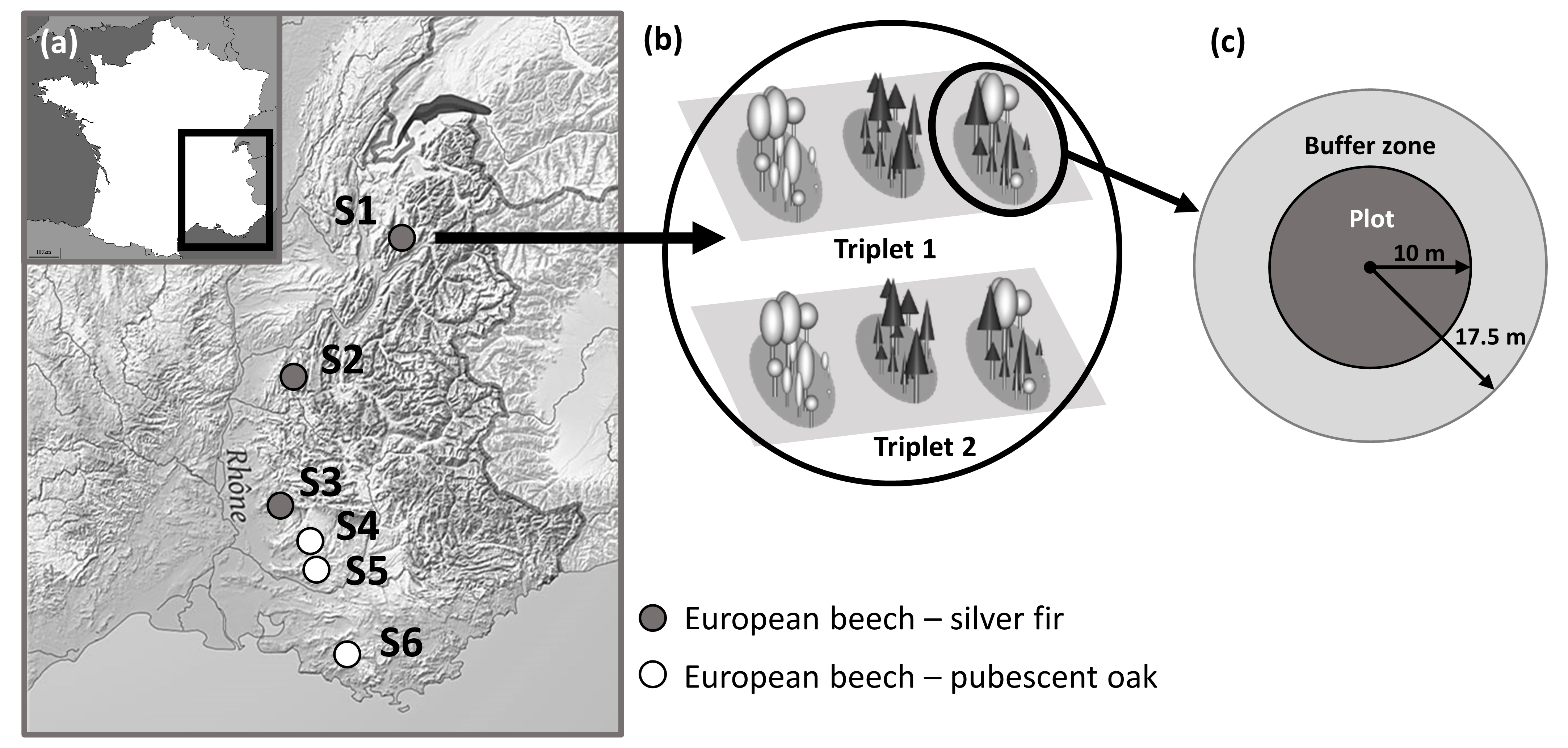
The variability of leaf phenology among regional beech
A new paper entitled ‘Leafy season length is reduced by a prolonged soil water deficit but not by repeated defoliation in beech trees (Fagus sylvatica L.): comparison of response among regional populations grown in a common garden‘ has been published by Massonnet et al. (SILVA Department) has been published in Agricultural and Forest Meteorology.
Abstract. Bud-burst and leaf-senescence determine the length of the growing season for deciduous trees and therefore the duration of potential carbon assimilation with consequences on biomass production. In Fagus sylvatica L., leaf phenology depends on both photoperiod and temperature. The future climate is expected to induce more frequent soil water deficits and biotic attacks (possibly resulting in severe defoliation).
The aim of the present study is to assess whether these constrains may alter leaf phenology. In a common garden, we sowed seeds collected from six beech forests along a small latitudinal gradient (140 km) in North-Eastern France. In 2014, after seven years growth, a rain exclusion was installed above the trees to test how recurrent soil water deficits impacted bud-burst (BB) and leaf-yellowing (LY) over three years. We also analyzed the response of leaf phenology to annual defoliation, aiming at affecting carbon and nitrogen availability in trees.
Delayed BB and early LY were observed, reducing the growing season (GS) until 14 days in response to soil water deficit whereas no influence of defoliation was detected. These time lags were not in relation with leaf nitrogen content. In the control treatment, BB occurred earlier and LY later in the northernmost populations than in the southernmost without clear relationships with local climate. A significant treatment x population interaction was observed revealing a plasticity in the leaf phenology response to soil water deficit among populations.
These results suggest that beech trees present a genetic differentiation of leaf phenology even within a small latitudinal gradient but that these differentiations could be disrupted by soil water deficit that is predicted to increase in the future.
The experiment and operating costs were funded by the LabEx ARBRE within the framework of the Mepib-Death project. Pierre-Antoine Chuste received a PhD grant from ARBRE.
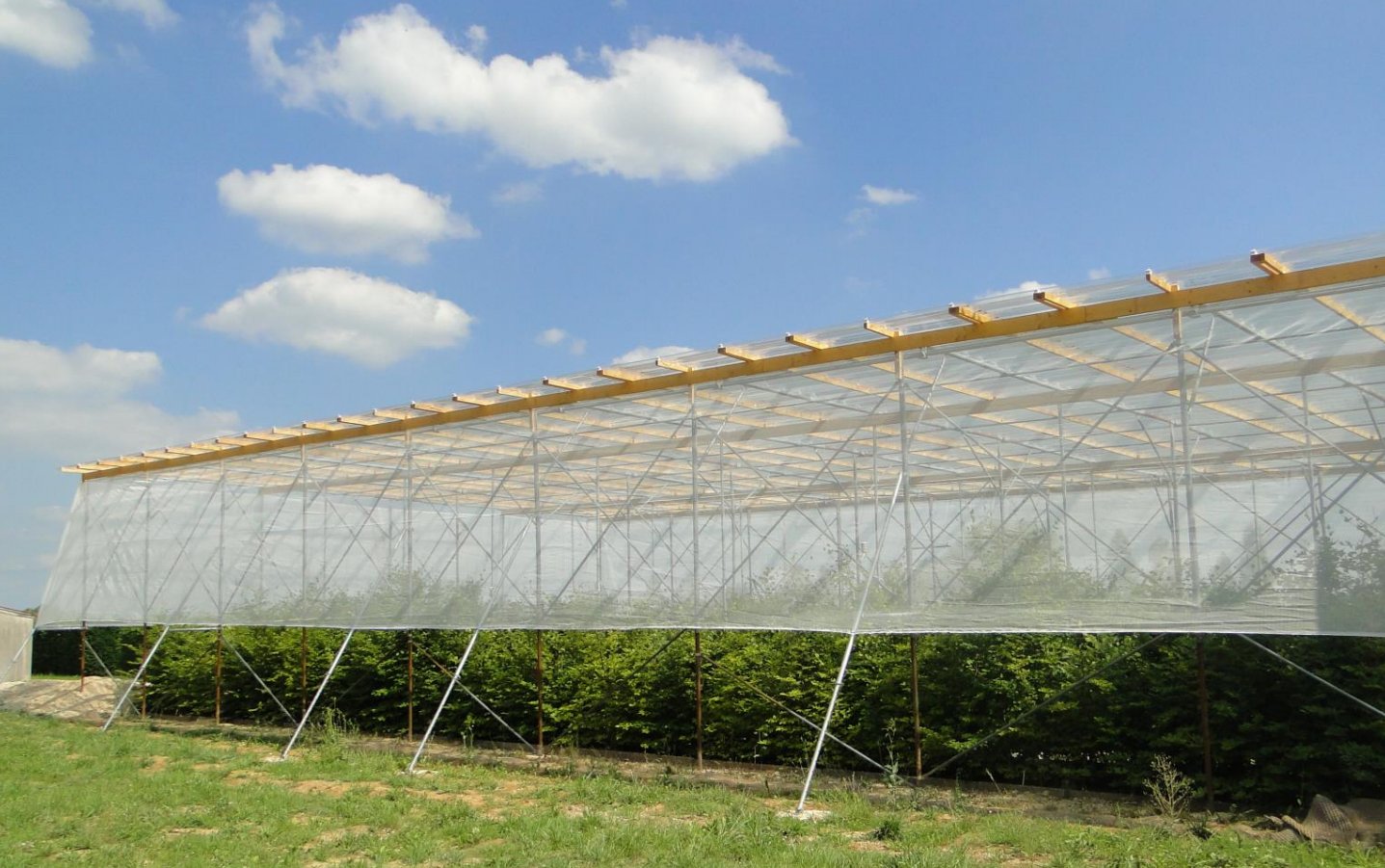
Les journées scientifiques du GDR Sciences du Bois
Les Journées scientifiques du GDR Sciences du Bois prévues du 18 au 20 novembre prochains, vont se dérouler en format 100% virtuel. Un programme adapté à cette situation est en ligne : https://bit.ly/3eWw7wP
Ces Journées combineront, comme chaque année, conférences invitées et présentation des posters en sessions plénières, susceptibles de couvrir l’ensemble des sciences du bois, et réunions de groupes de travail sur des thèmes plus focalisés.
La liste des posters est consultable au lien suivant : https://bit.ly/38GaAHE
La manifestation se déroulera essentiellement sur la plateforme Livestorm qui nécessite une inscription par demie journée. L’inscription est gratuite, ouverte à toutes et tous mais obligatoire pour pouvoir recevoir les liens de connexion. Pour vous inscrire rendez vous sur le site des journées par ce lien : https://bit.ly/36d47AS.
N’hésitez pas à faire suivre l’annonce à vos collègues et réseaux.
Pour toute information: gdr-bois-2020@sciencesconf.org
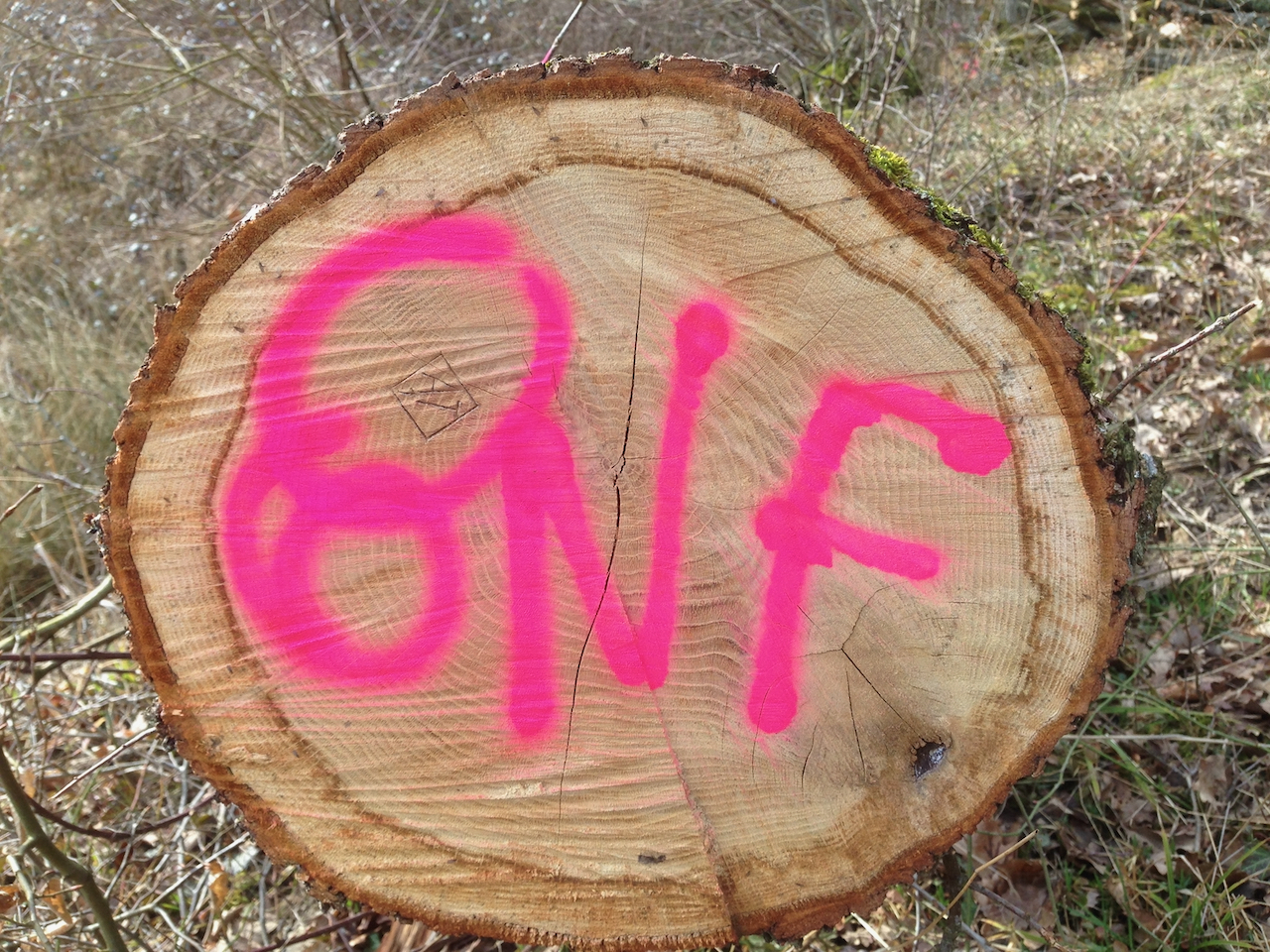
Sino-French Environment Month
Sun Gate #2 is an art installation that combines traditional Chinese culture, contemporary art and innovative technology in the field of biomaterials. Inspired by an ancient Chinese sundial, Niko de la Faye uses natural materials, mainly mycelium of the wood decayer fungus Ganoderma lucidum (so-called reishi), to create this unique installation. SUN GATE #2 has partly been funded by the LabEx ARBRE.
With the World Conservation Congress in Marseille in a few months’ time and the 15th Conference of the Parties (COP15) to the Convention on Biological Diversity (CBD) taking place in Kunming, the Sino-French Environment Month has naturally chosen “Protecting Biodiversity” as the theme for this year’s event. From October 17 to November 15, the seventh edition of the Sino-French Environment Month will bring together eminent personalities and experts in their fields – artists, architects, researchers, writers, directors, etc. – to encourage collective and individual action to protect biodiversity and the sustainable use of its resources through a series of events.

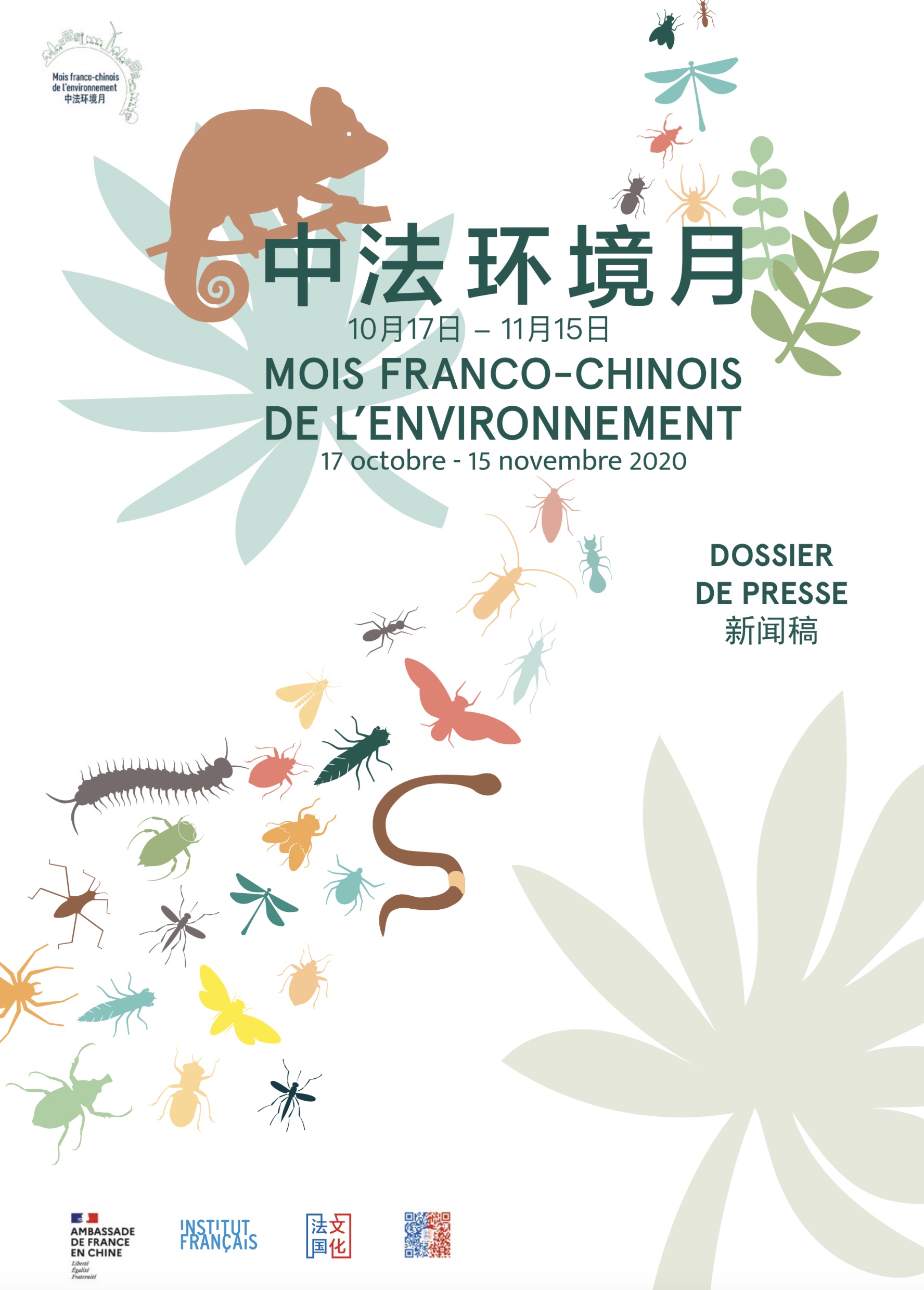
Progress in biomass torrefaction
Since 2016, the WOOTHOC team of the Wood Sciences Laboratory (LERMAB), University of Lorraine, collaborates with Pr. Wei-Hsin CHEN, a highly cited researcher from the “National Cheng Kung University” in Taiwan. This collaboration have been strongly supported by the Labex ARBRE through a mobility grant to Prof. CHEN, a Ph.D. scholarship to Bo-Jhih LIN and International Master grant to Yu-Ying LIN. This fruitful collaboration led to high quality publications, including:
– A joint publication in the prestigious journal Progress in Energy and Combustion Science (Impact Factor 29) : W-H Chen, B-J Lin, Y-Y Lin, Y-S Chu, A Ubando, P Loke Show, O H Chyuan, J-S Chang, S-H Ho, A Culaba, A Pétrissans, M Pétrissans. Progress in biomass torrefaction: Principles, applications and challenges. Progress in Energy and Combustion Science, in press and
– the ‘Applied Energy 2019 Highly Cited Research Paper Award’ to : Safar M., Lin B.-J., Chen W.-H., Langauer D., Chang J.-S., Raclavska H., Pétrissans A., Rousset P., Pétrissans M. (2019) Catalytic effects of potassium on biomass pyrolysis, combustion and torrefaction. Applied Energy 235.

Large-scale genomics sheds light on the evolutionary history of mutualistic forest-dwelling fungi
Mutualistic fungi, known as mycorrhizae, play a major role in terrestrial ecosystems because they help plants acquire nutrients. However, how these fungi became symbionts was a mystery until now. Answers to this question have been provided by an international research consortium coordinated by INRAE and the Joint Genome Institute (US Department of Energy) to which the University of Lorraine and CNRS also contributed. The group analysed the genomes of 135 species of forest-dwelling fungi. The study’s results clarify how fungi living as decomposers became plant symbionts over the course of evolution. These findings were published on October 12 in Nature Communications.
Fungi display a variety of modes of nutrition (i.e. lifestyles): some are pathogens that parasitize living organisms, some are saprotrophs that exploit decomposing organic matter, and yet others are mycorrhizae that form beneficial symbioses with plants. More specifically, the plant roots and fungi engage in a mutualistic relationship that benefits them both. The mycorrhizae help the plants absorb essential minerals, such as nitrogen and phosphorus, promoting growth. The plants provide the mycorrhizal fungi with sugars and favourable environmental conditions. This mutualism has allowed plants to colonise most terrestrial habitats. To understand the evolutionary emergence of symbiotic traits in forest-dwelling fungi, the research consortium compared the functional traits encoded by the genomes of 135 fungal species, including 62 species of mycorrhizal fungi. Notably, the researchers sequenced and analysed, for the first time, the genomes of 29 symbiotic fungal species belonging to taxonomic orders like Russulales and Cantharellales; these taxa are important keystone species in temperate forest ecosystems.
The study revealed that, over evolutionary time, forest fungi transitioned multiple times from sapotrophic to symbiotic lifestyles. These transitions were accompanied by a loss of the genes that encode plant-cell-wall-degrading enzymes (such as cellulases and lignin-modifying enzymes). Other genes (e.g., sugar and amino acid transporters) are conserved in saprotrophic ancestors, but have been recruited for new symbiotic functions. Finally, several symbiosis-specific genes involved in fungus-plant communication were created de novo.
These transitional patterns were observed in all the families of ectomycorrhizal fungi1 belonging to the phyla Basidiomycota and Ascomycota2 (which represent 20,000 species). This finding provides a striking example of recurrent convergent evolution3 taking place over a time span of more than 100 million years. The researchers also discovered a few “hybrid” fungi—species that are still capable of decomposing organic matter but that can also live in symbiosis within the roots of their host plants. In these species, the genes encoding plant cell-wall-degrading enzymes are still present. However, they are not expressed when the fungi live as symbionts. It is possible that these species illustrate the first steps towards strict symbiosis.
This study has considerably increased the genomic resources available for studying the mechanisms underlying the development and function of mycorrhizal symbioses. In addition to clarifying the evolutionary history of forest-dwelling fungi, these discoveries will facilitate future studies examining how fungal communities in forest ecosystems could deal with climate change.
[1]Ectomycorrhizal fungi colonise the roots of plants. They live in symbiosis with their hosts, helping the latter absorb minerals.
[2]Basidiomycota and Ascomycota are two fungus phyla. Species in Basidiomycota form spores on the outside of specialised cells called basidia; mushroom-forming fungi are the most emblematic members of this taxon. Species in Ascomycota form spores within specialised cells called asci; commonly recognised members of this taxon are the morels, truffles, and yeasts.
[3]Convergent evolution is a process whereby different species that experience the same environmental constraints evolve similar adaptive responses. In this case, ectomycorrhizal symbiosis is that convergent response.
| Reference |
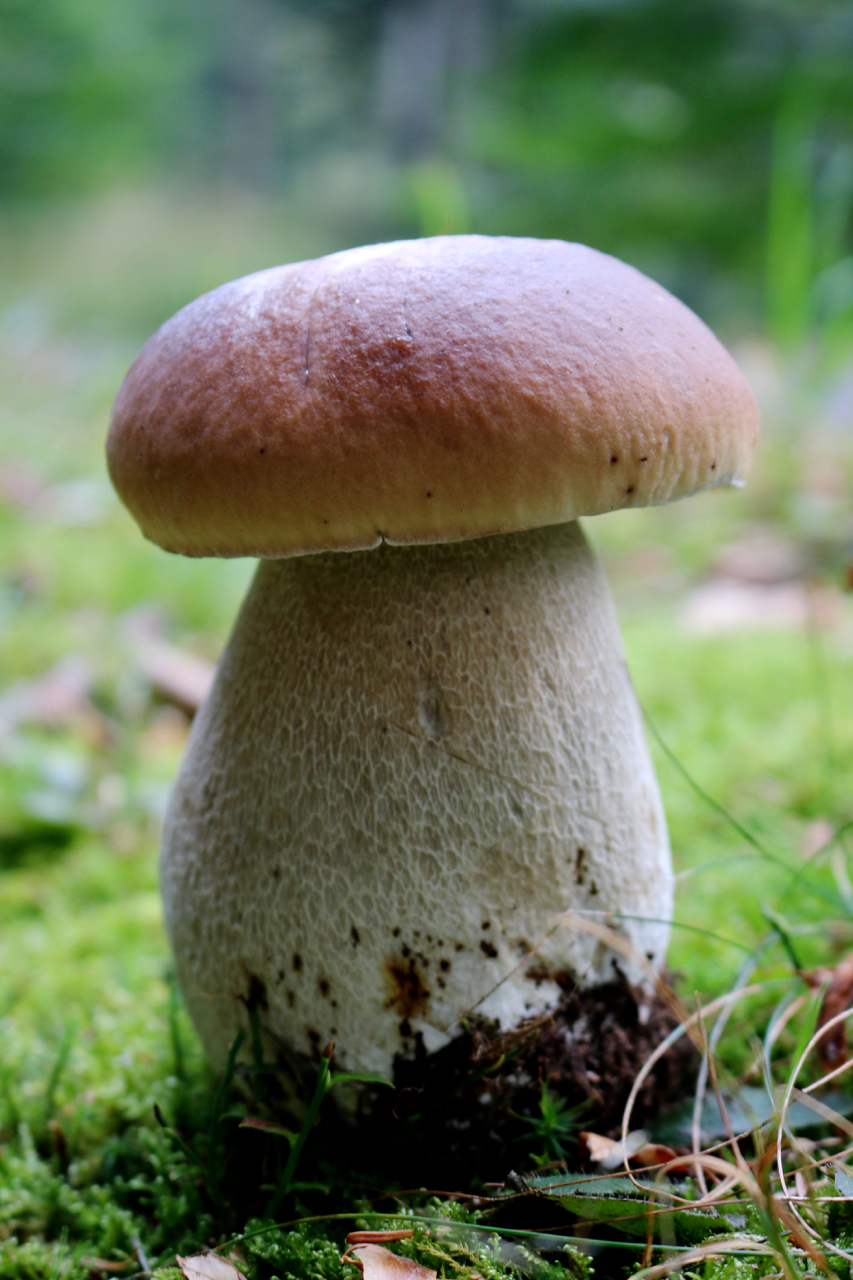
Une belle reconnaissance pour les actions du réseau Tous Chercheurs
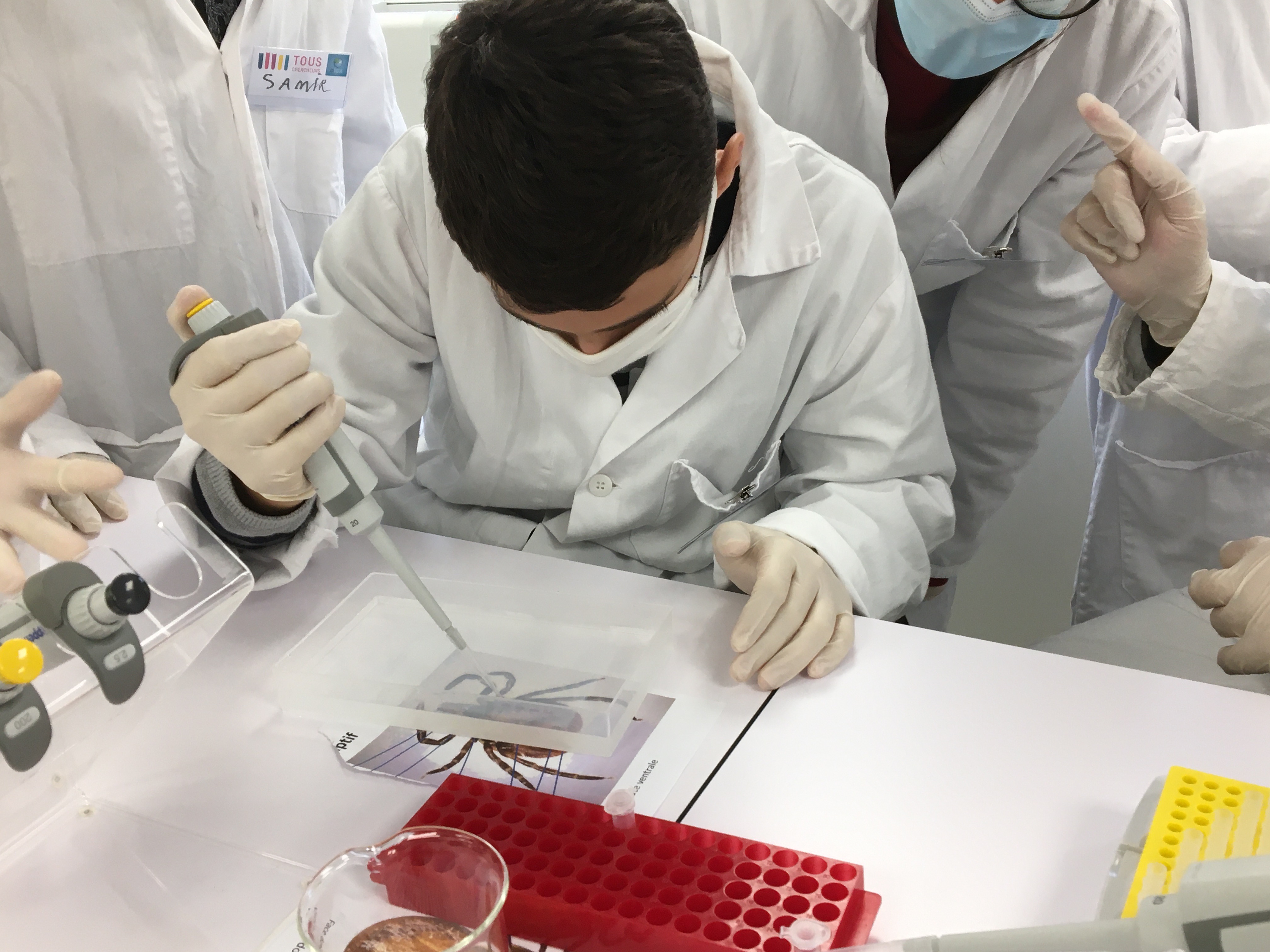
A LERMAB researcher in the spotlight
After obtaining the thesis prize from the SIMPPE Doctoral School (Science and Engineering of Molecules, Products, Processes and Energy), Mahdi Mubarok has been awarded the first-place prize for the outstanding international thesis in the field of Wood Science provided by the IAWS (International Academy of Wood Science). His thesis, concerning the chemical modification of beech wood, was carried out within the framework of a collaboration between the University of Lorraine and the University of Göttingen, thanks to the funding from LABEX ARBRE, under the supervision of Professors Holger MILITZ and Philippe GERARDIN. Aiming to develop environmentally friendly methods of wood preservation, his work has led to the development of non-biocidal treatments to improve the durability of wood against both decay fungi and termites. Arriving to the Lorraine as part of a Master Double Degree program between the University of Lorraine, Bogor Agricultural University (IPB), and AgroParisTech, Mahdi’s thesis was becoming the opportunity for LERMAB to pursue its collaborations with Indonesia and IPB. The complete work has dedicated at least six publications in the peer-reviewed journals.

Séminaire LabEx : Anticiper les futurs des forêts – Sociologie des recherches forestières en France
Le 30 Septembre 2020 à 13h30, Antoine Dolez du Laboratoire SAGE ( Sociétés, Acteurs, Gouvernement en Europe, Université de Strasbourg) donnera un séminaire dans la salle de Conférences du Centre INRA GrandEst-Nancy, Champenoux.
Ce séminaire propose quelques réflexions sociologiques et historiques sur l’évolution et l’organisation des recherches forestières en France. Il s’appuie sur une enquête menée auprès de chercheurs et d’ingénieurs de l’INRAE et du CEFE qui modélisent les écosystèmes forestiers et anticipent leurs trajectoires futures. Le séminaire se concentre sur de deux résultats de cette recherche. Il est tout d’abord question de montrer autour de quels problèmes scientifiques les recherches forestières se structurent actuellement. Pour ce faire, je mobilise le concept d’ « agenda de recherche », et je distingue, ainsi, trois agendas des recherches forestières : l’agenda sylvicole, l’agenda écologique et l’agenda climatique. Puis, je détaille trois « visions des futurs des forêts » qui sont portées par les différents acteurs des recherches forestières. Ces « visions des futurs des forêts » concernent non seulement les rôles que les forêts peuvent jouer dans l’atténuation et l’adaptation au changement climatique, mais aussi, et surtout, l’ensemble des technologies, savoirs et pratiques que les acteurs pensent nécessaires de développer pour préparer les forêts aux défis de demain.
Antoine Dolez est sociologue des sciences, ses travaux s’inscrivent dans le courant des Science and Technology Studies (STS). Il a réalisé sa thèse de sociologie au Laboratoire Ecosystèmes et Sociétés en Montagnes (LESSEM) de l’INRAE et au laboratoire PACTE (Grenoble). Il est chercheur associé au laboratoire SAGE (Strasbourg). Ses recherches concernent la sociologie et l’histoire des recherches forestières, l’informatisation de la nature, le monitoring environnemental, et l’étude des futurs environnementaux.



